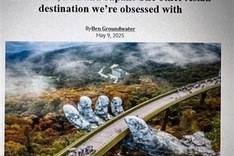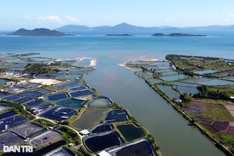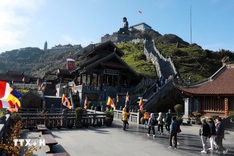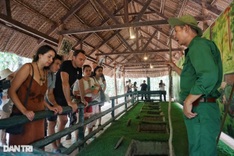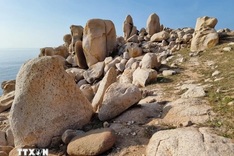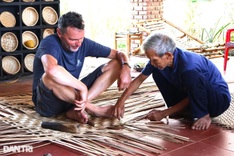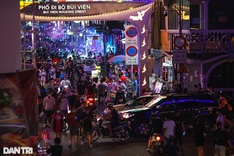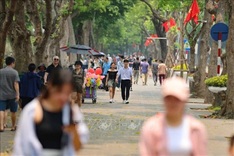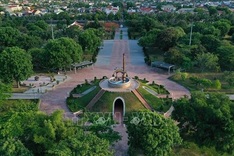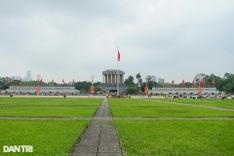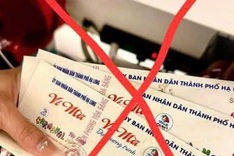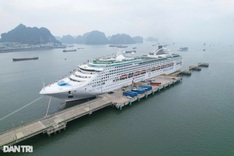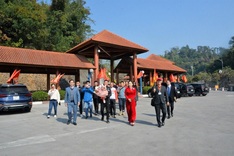Ben Tre is the land of the coconut. Matt Bender took an Epicurean holiday to the Mekong Delta to find out what all the fuss is about.

Dao had a sly, almost flirty smile on her face as she settled in next to me and my photographer, Francis. The three of us were taking a sputtering junk from the mouth of the Mekong down to the archipelago of small landmasses where they harvest the coconuts that make this region famous. “Make no mistake,” she said, tapping my notepad, “the pH of the soil here makes the most delicious coconuts in all of Vietnam. They are smaller, organic and full of flavour. They sell in Hanoi for VND40,000 each.”
While coconuts and coconut-related products are the biggest exports from The Mekong, coconuts aren’t the only fruits grown in the region. This area is home to the most prized jackfruits, longans, pineapples and durians in — according to Dao — “all of Vietnam”. Although you’ll see boats unloading fruit in District 8, the preferred method of transport by the growers in Ben Tre is by truck, meaning that the boat owners you see are independents that live on the water and occasionally bring in a haul of coconuts for extra money. Surprisingly, most of the businesses the farming co-operatives deal with are in northern cities and not in nearby Ho Chi Minh City, which can fend for itself when it comes to sourcing fresh produce.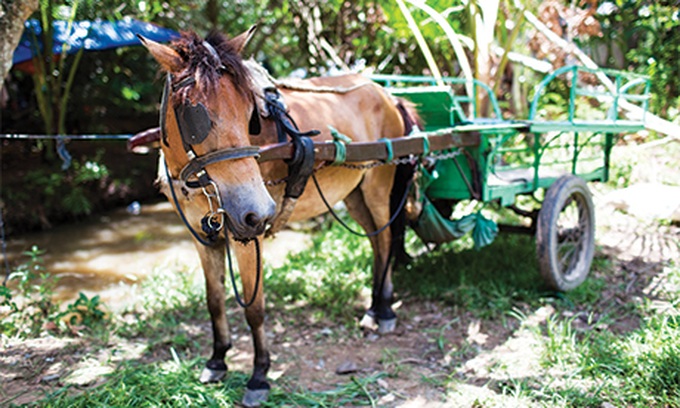
From Disoriented to Donkey Ride
There are only a few bus lines that will take you to Ben Tre from Ho Chi Minh City. The Mai Linh Bus Centre (420 Le Hong Phong, Q10), for example, does not, even though the Mai Linh website says they do. Of course, this is the same website that directed us to a bus station on Pham Ngu Lao that not only wasn’t there, but caused an old lady in a floral hat to look at us like we were crazy when we asked about it. Hot and bothered, we finally made it to the Thinh Phat Bus Centre (25A Su Van Hanh, Q5), where they sold us real tickets and put us on a real bus. Well, more of a minivan but close enough.
Fast forward with a few highlights:
— A cramped bus ride
— An old guy offering me his cup so I didn’t have to slurp from the water cooler (the people of Ben Tre are renowned for their hospitality)
— A security guard yelling at me for sitting on a guard rail
— A helmetless motorcycle ride through dusty coconut groves
— A pack of puppies chasing a plastic water bottle
— Ms. Dao and her sputtering junk
It wasn’t a long ride from the dock to a donkey-pulled wagon, and only five minutes via donkey to the candy factory. Despite Ms. Dao sweeping her hand dramatically through the air as we entered the area, we had arrived at — although on the cheap and through the back door — the exact same little trinkets and candy market that the one-day Mekong tours on Pham Ngu Lao will take you to. We joined file with the lines of tourists, ate fresh coconut candy and contemplated the wallets and hand-carved figurines.
I drank a famous Mekong coconut (VND20,000: half-price supposedly, although twice as much as it costs for one on the side of the road), which tasted pretty much exactly like every other coconut in the world: the most delicious, refreshing drink you could ask for on a hot day. Yet it wasn’t markedly different from other coconuts to my untrained palette. The ‘smaller’ aspect Dao had mentioned became annoyingly real, however, as I sucked down two and was still thirsty by the time we made it to the pagoda area at the end of the tour. There we had a plate of fruit and listened to a song about the “Ben Tre Pose”, a way of standing that is meant to be polite and formal — although I’ve heard Ho Chi Minh City kids jokingly refer to a Ben Tre pose as someone standing awkwardly, looking like they’re waiting for a blind date. We got taken to a restaurant where they price-gouge you, like VND80,000 for spring rolls. All in all, it was a typical day in the life of a tourist and I was totally bummed out.
Changing that all was the coconut monk.

One Male, Nine Females, No Children
We made a quick stop at a tiny island which turned out to be the abandoned home of the coconut monk, Nguyen Thanh Nam, one Vietnam’s best known cult leaders and one of those guys whose biography just makes the world a more interesting place to live. Examples: he made cats and mice live together and erected a giant replica of the Apollo spaceship in his backyard.
Born on Christmas Day in 1910 to a wealthy family, he later dedicated his life to Buddhism and moved to the island to purify himself with fruit and coconut water. Despite his odd isolationist dogma — “One male, nine females! Conjugal life without children!” — he was obsessed with uniting Vietnam in the early 1970s, and is said to have walked from the north to the south of the island every evening in an attempt to psychically heal the wounds between the two regions. After a failed presidential bid in 1971, he returned to the island to promote his specific flavour of Buddhism until his death in 1990. Despite his efforts, the sect was never officially recognised and numbers are foggy about how many members there actually were at any given time.
As the junk sputtered to life and we loaded back onto it, the coconut monk’s story stayed with me. I was struck with the feeling that even though the coconut monk died ruined and unrecognised, his life isn’t a sad story. It is sad in a way, but it’s sad like a little pocket of sadness with an amazing life packed into it, sad like seeing a happy couple and pausing to think fondly of someone from your past.
Maybe it was the sunset or Ms. Dao’s cheerful babble, the slow tilt of the boat or the women washing clothes in the river, but I started to feel that melancholic ache that’s the sign of a good trip finished. A coconut tumbled from a nearby tree and splashed down next to the boat, marking the moment.
I asked Dao if she ever dreamed of leaving her life on the Mekong and moving to the big city. In perfect Ben Tre pose she smoothed out her Ao Dai and, with that same girlish grin, said, “Leave my family and all this money? No way.”

Oiling the Nuts
When I was growing up in the early 1980s, coconuts were considered to be terribly unhealthy due to the high amount of tropical oils and saturated fats contained in them. Jump ahead to the present day and coconuts are considered some of the healthiest and most malleable foodstuffs out there. What happened?
While coconut oil does have a large amount of saturated fats, those fats have since been identified as medium-chain fatty acids — which basically have the opposite effect of the saturated fats you get from pizza and bacon. So consuming coconut oil will actually turn your bad cholesterol into good cholesterol, increase your metabolism to help burn fat and provide those complex fats that help to build muscle.
Anyone familiar with the Paleo diet will know that, although bread and grains are shunned, coconut meal (pulverised coconut meat) can be used to bake healthy breadlike treats that longtime Paleo dieters must have a killer craving for. Coconut oil can also be directly applied as a hair conditioner, natural lubricant or makeup remover.

